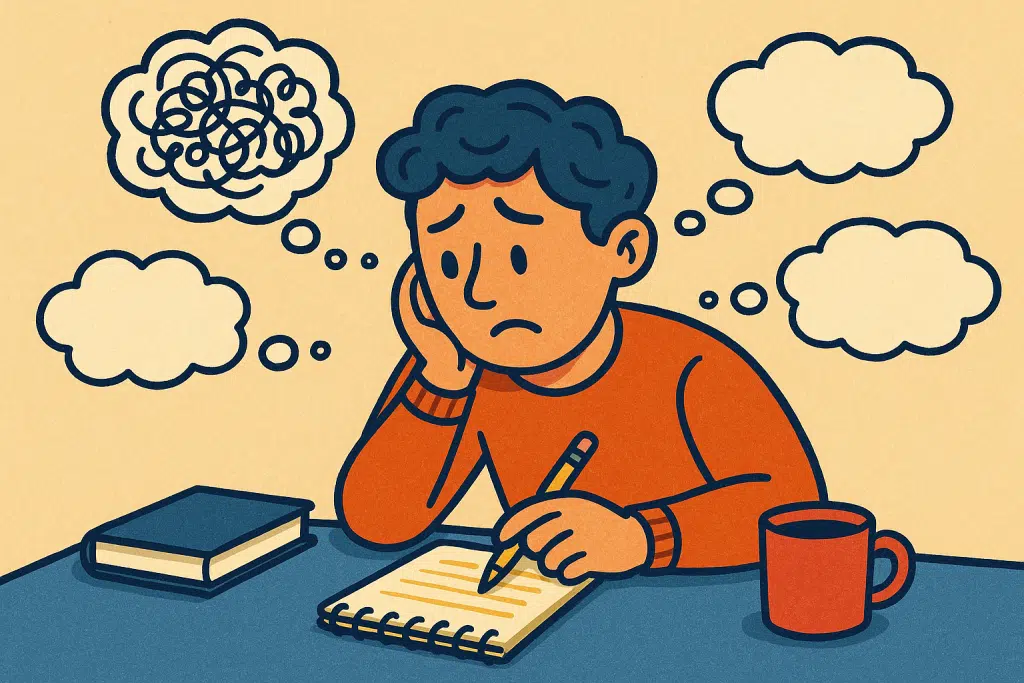You Don’t Need to Finish Every Thought
Lily Carter July 29, 2025
In our fast-paced, information-saturated world, the pressure to complete every thought, task, or idea can feel overwhelming. Yet, understanding that you don’t need to finish every thought can be a liberating realization, freeing your mind from unnecessary stress and unlocking new levels of creativity. In today’s environment of constant mental chatter—where notifications, deadlines, and endless to-do lists compete for attention—learning to embrace the art of leaving ideas unfinished can transform how you think and create. This approach not only alleviates the burden of perfectionism but also fosters a mindset that values exploration over rigid completion. By allowing thoughts to remain open-ended, you create space for unexpected connections, innovative insights, and a more flexible approach to problem-solving. Embracing this mindset can lead to surprising benefits, from enhanced mental clarity to a deeper appreciation for the creative process itself.

Why you don’t need to finish every thought—and how that alleviates mental load
Feeling indebted to complete a mental chain can actually harm productivity and emotional well‑being. The brain keeps unfinished thoughts active—thanks to the Zeigarnik effect—leading to intrusive rumination until closure. But research shows that not finishing every mental thread can help interrupt that cycle, foster creative incubation, and reduce cognitive stress.
The Zeigarnik & Ovsiankina effects: background
- Zeigarnik effect: Unfinished tasks loom larger in our minds than completed ones, creating tension that drives persistent recall.
- Ovsiankina effect: Starting a task triggers an urge to resume and complete it—even when incomplete—due to cognitive tension.
These tendencies bind us to thoughts long after they cease being helpful. Yet, resisting completion can be a path to liberation.
How learning to let thoughts rest creates space (and mental clarity)
1. Reduces perseverative cognition (relentless overthinking)
Chronic mental loops about past or future stressors—known as perseverative cognition—are linked to elevated cortisol, blood pressure, and anxiety. Allowing thought segments to remain open-ended, instead of forcing resolution, interrupts that loop.
2. Supports mental flexibility and creativity
Consciously not finishing every line of thinking encourages incubation. Some famous creative breakthroughs arise after stepping away and letting ideas evolve unconsciously—an effect partially described by unconscious thought theory.
3. Cuts switching cost overload
Multitasking and task‑shifting incur cognitive overhead—as high as 40% loss in productivity due to mental resets. Letting thoughts fade rather than chase closure avoids unnecessary context-switching.
Real‑world strategies: stop chasing closure on every thought
Mental brain-dumps and journaling resets
Dump thoughts into a notebook or digital note app. This externalizes thinking, allowing mental threads to rest without needing completion—freeing working memory.
Practice thought stopping intentionally
CBT-based methods like thought stopping—quieting a repeating mental loop—help.end persistent thoughts before they spiral, replacing them with neutral or positive content.
Silent walking or “mind decluttering”
Trends like silent walking—walking without distractions—give space for racing thoughts to expire naturally. Reported benefits include emotional calm, focus, and creative clarity.
Use 8D audio “brain flossing” to disrupt mental clutter
A rising TikTok trend, brain flossing uses immersive sound to create a mental reset, activating both hemispheres and easing racing thoughts—requiring only headphones and quiet time.
Practical guide: letting go of incomplete thoughts in daily life
| Step | What to Do | Why It Helps |
|---|---|---|
| Notice intrusive threads | When a thought recirculates, catch it. | Awareness is the first step to letting go. |
| Use brief journaling | Write one sentence and stop. | Externalizes, stops looping. |
| Pause deliberately | If you feel compelled to finish mentally, pause for 30 seconds. | Interrupts the completion urge. |
| Take a silent walk or listen to 8D audio (try once a day) | Give your mind time out. | Diffuses stress, opens mental clarity. |
| Replace the drive for closure with curiosity | Instead of finishing the thought, ask, “Is this helpful now?” | Shifts focus from compelled to chosen thinking. |
When it’s helpful—and when it’s problematic—to leave a thought unfinished
Helpful When:
- Thoughts are looping over worry, doubt, or anxiety.
- Creative ideation benefits from incubation.
- Cognitive load is high, and forcing resolution adds stress.
Not Helpful When:
- Planning concrete steps that require clarity.
- Critical tasks risk being abandoned. In those cases, draft a placeholder or outline instead of racing to finish the idea.
Mental health and well‑being implications
Recent research challenges the notion that suppressing distressing thoughts is inherently harmful. Controlled studies show that training individuals to suppress fearful thoughts can reduce anxiety, depression symptoms, and boost resilience, with benefits lasting up to three months. Despite traditional criticism of thought suppression, its strategic use under professional guidance can enhance mental health by helping individuals manage intrusive thoughts effectively.
Moreover, allowing thoughts to remain open-ended, rather than forcing mental closure, can reshape one’s internal narrative. This approach reduces psychological distress, improves emotional regulation, and enhances focus. Techniques like mindfulness-based cognitive therapy (MBCT) encourage observing thoughts without judgment, fostering mental clarity and emotional stability. These strategies can complement therapies like cognitive-behavioral therapy (CBT), offering practical tools for managing conditions like anxiety or OCD.
Key takeaways
- You don’t need to finish every thought—letting ideas rest can ease mental tension, improve creativity, and support emotional health.
- Psychological effects like the Zeigarnik and Ovsiankina effects explain why incomplete ideas feel sticky—but resisting closure can be powerful.
- Strategies like brain-dumping, thought-stopping, silent walking, and brain flossing bring mental clarity and break intrusive loops.
- Aim to replace the need for closure with choice—question whether continuing the thought now is useful.
Embracing the idea that not every thought needs to be finished is about intentional mental freedom, not abandonment. Recognizing when chasing completion causes stress allows you to pause ideas deliberately, fostering clarity and calm. This practice sparks creativity by freeing your mind from rigid problem-solving, enabling fresh insights. By prioritizing which thoughts to pursue, you manage mental energy better, enhancing productivity and emotional balance.
References
- Rose, H. (2022). The psychology of unfinished tasks. Ness Labs. https://nesslabs.com
- Silverman, J. (2025). Why We Procrastinate: The Psychology of Putting Things Off. McLean Hospital. https://www.mcleanhospital.org
- Abraham, M. (2018). The Zeigarnik Effect and Memory. Verywell Mind. https://www.verywellmind.com







